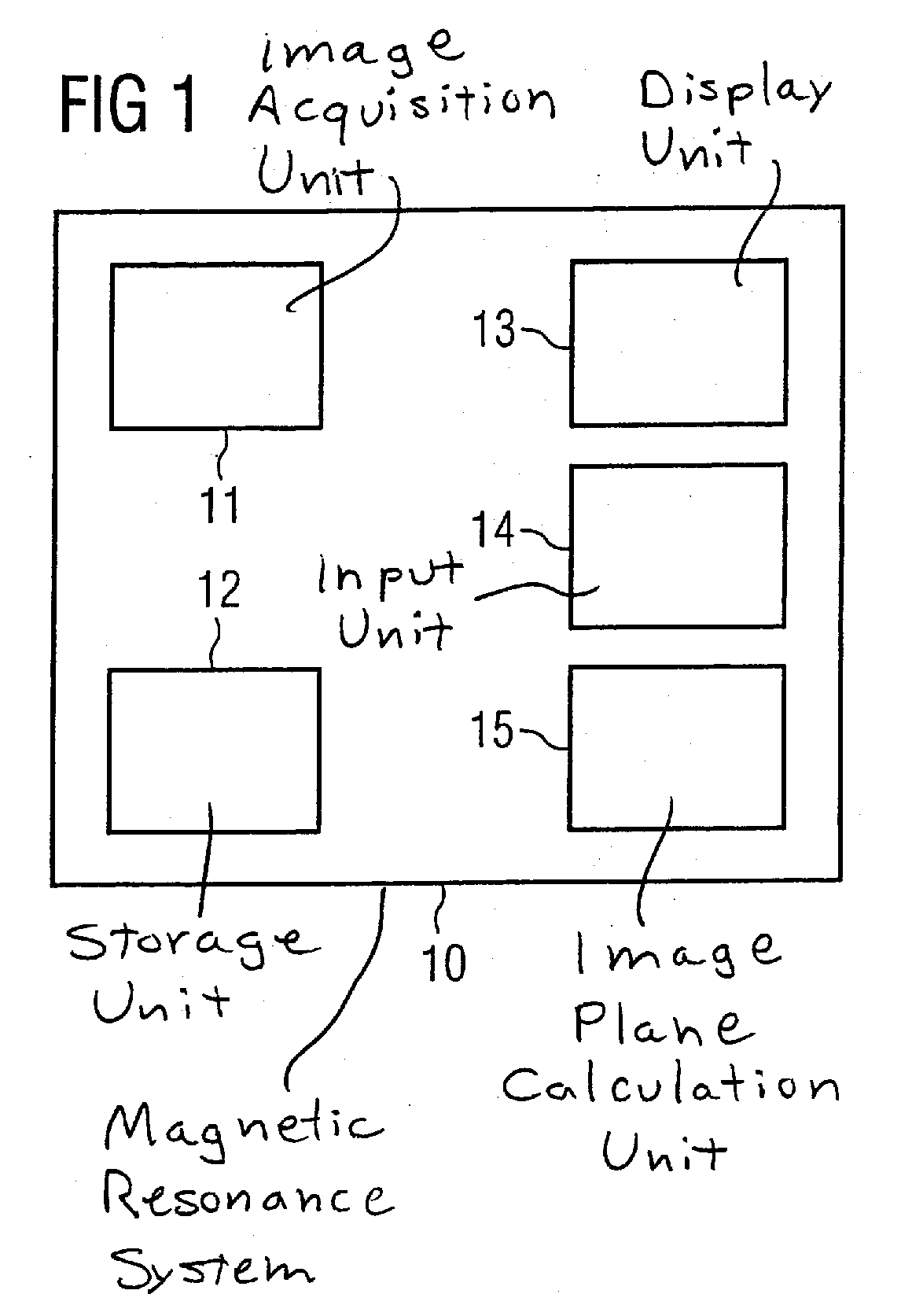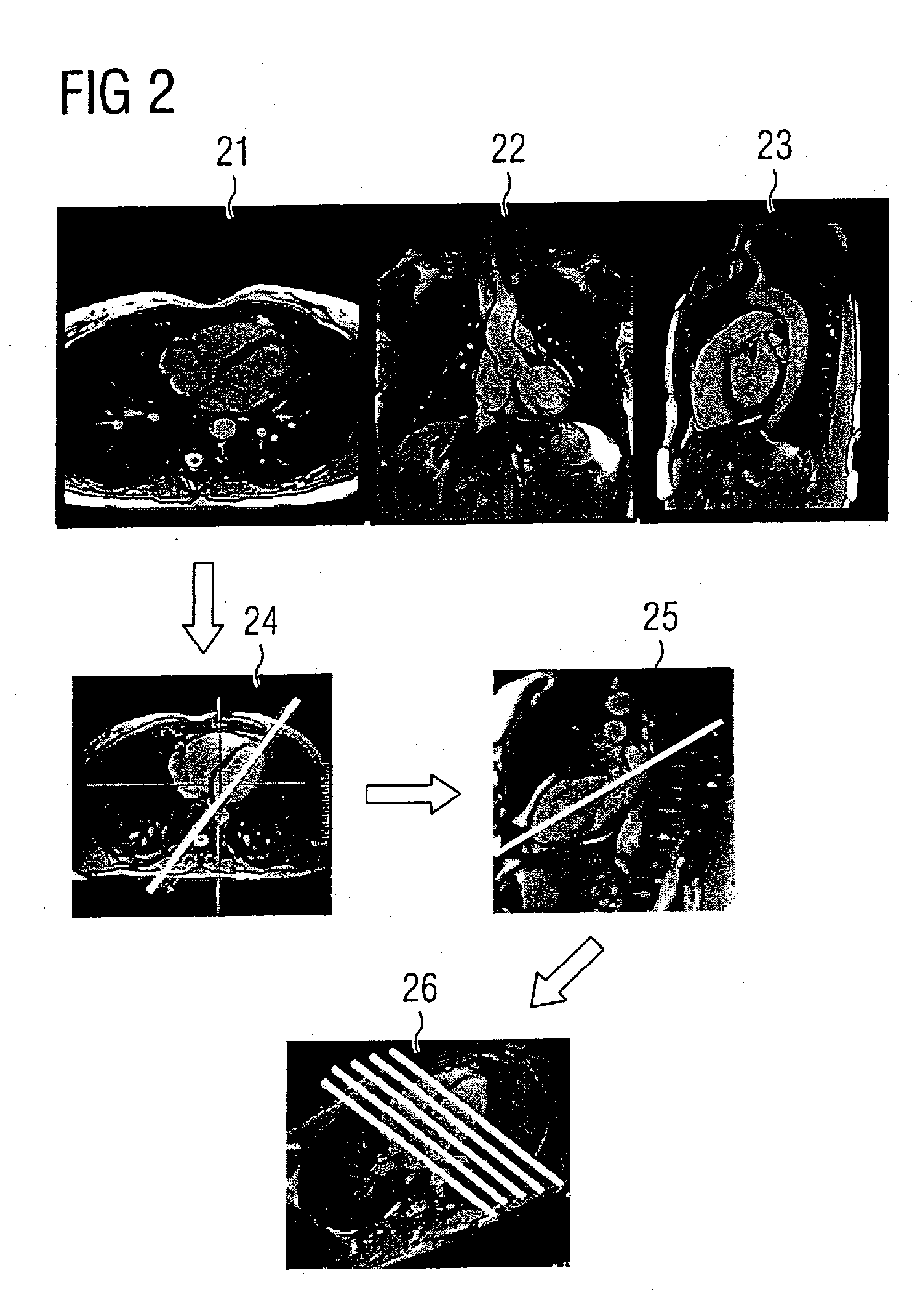Magnetic resonance system and method for cardiac imaging
a magnetic resonance system and cardiac imaging technology, applied in the field of cardiac imaging methods, can solve the problems of difficult cardiac imaging, time-consuming and laborious, and the threshold for operating personnel who are not health professionals to conduct heart examinations is therefore very large, and achieves the effect of less time-consuming and more cost-efficien
- Summary
- Abstract
- Description
- Claims
- Application Information
AI Technical Summary
Benefits of technology
Problems solved by technology
Method used
Image
Examples
Embodiment Construction
[0023]FIG. 1 schematically shows a magnetic resonance (MR) system 10. The basic design and the interaction of the various components of a magnetic resonance system (such as, for example, basic field magnet, gradient coils, RF irradiation with radio-frequency antenna, reception antenna etc.) are known to those skilled in the art and need not be described further herein since they are not of importance for the understanding of the invention. Only the components that are necessary for the understanding of the invention are described here. The schematic magnetic resonance system 10 shown in FIG. 1 includes an image acquisition unit 11 for acquisition of the MR images, in particular here the overview image. Naturally the other MR images are also acquired with the image acquisition unit 11. Furthermore, a storage unit 12 is provided in which at least the predetermined orientation and position of the image plane relative to the middle of the magnet of the resonance system is stored. The MR...
PUM
 Login to View More
Login to View More Abstract
Description
Claims
Application Information
 Login to View More
Login to View More - R&D
- Intellectual Property
- Life Sciences
- Materials
- Tech Scout
- Unparalleled Data Quality
- Higher Quality Content
- 60% Fewer Hallucinations
Browse by: Latest US Patents, China's latest patents, Technical Efficacy Thesaurus, Application Domain, Technology Topic, Popular Technical Reports.
© 2025 PatSnap. All rights reserved.Legal|Privacy policy|Modern Slavery Act Transparency Statement|Sitemap|About US| Contact US: help@patsnap.com



